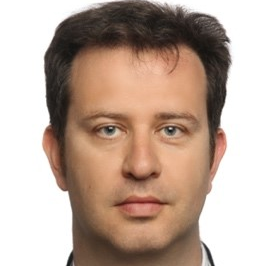Advanced Sound Absorption Materials and Applications
A special issue of Materials (ISSN 1996-1944). This special issue belongs to the section "Porous Materials".
Deadline for manuscript submissions: closed (20 December 2022) | Viewed by 18510
Special Issue Editor
2. Universitat Politècnica de Valènciadisabled, Valencia, Spain
Interests: periodic media; metamaterials; sound absorption
Special Issue Information
Dear Colleagues,
Research on materials for sound absorption and noise mitigation has dramatically evolved in recent years. The discovery of new physical phenomena has provided new innovative solutions and technology for the development of advanced sound absorption materials. Many challenges for the engineering of acoustic materials for sound absorption have motivated this research, such as reducing the density and thickness of materials or developing new promising alternatives for both thermal insulation and acoustic absorption.
New materials like aerogels, bio-based composites, carbon nanotubes, metaporous materials, double-porosity materials, or materials made of natural fibers, among others, have received significant interest due to their mechanical, thermal, and acoustical performances. Prediction tools are very powerful for understanding and describing the acoustic characteristics of different media from the microstructure to demonstrate their acoustical macro-behavior. Acoustic artificial metamaterials with exotic effective parameters have advances in manipulating and absorbing sound waves, particularly in sound absorption. Perfect sound absorption and absorption at subwavelength thickness can be obtained by properly designing these materials. Science and engineering converge in this field of acoustics to discover, develop, and fabricate new advanced sound absorption materials for future promising applications.
Dr. Ruben Picó Vila
Guest Editor
Manuscript Submission Information
Manuscripts should be submitted online at www.mdpi.com by registering and logging in to this website. Once you are registered, click here to go to the submission form. Manuscripts can be submitted until the deadline. All submissions that pass pre-check are peer-reviewed. Accepted papers will be published continuously in the journal (as soon as accepted) and will be listed together on the special issue website. Research articles, review articles as well as short communications are invited. For planned papers, a title and short abstract (about 250 words) can be sent to the Editorial Office for assessment.
Submitted manuscripts should not have been published previously, nor be under consideration for publication elsewhere (except conference proceedings papers). All manuscripts are thoroughly refereed through a single-blind peer-review process. A guide for authors and other relevant information for submission of manuscripts is available on the Instructions for Authors page. Materials is an international peer-reviewed open access semimonthly journal published by MDPI.
Please visit the Instructions for Authors page before submitting a manuscript. The Article Processing Charge (APC) for publication in this open access journal is 2600 CHF (Swiss Francs). Submitted papers should be well formatted and use good English. Authors may use MDPI's English editing service prior to publication or during author revisions.
Keywords
- sound absorption
- acoustic materials
- metamaterials
- noise mitigation
- subwavelength
- porous media
Benefits of Publishing in a Special Issue
- Ease of navigation: Grouping papers by topic helps scholars navigate broad scope journals more efficiently.
- Greater discoverability: Special Issues support the reach and impact of scientific research. Articles in Special Issues are more discoverable and cited more frequently.
- Expansion of research network: Special Issues facilitate connections among authors, fostering scientific collaborations.
- External promotion: Articles in Special Issues are often promoted through the journal's social media, increasing their visibility.
- Reprint: MDPI Books provides the opportunity to republish successful Special Issues in book format, both online and in print.
Further information on MDPI's Special Issue policies can be found here.






